Over the years, the need for shunting locomotives declined dramatically.
As late as 1980, BR still had nearly 1,000 of the small, reliable, but woefully underused diesel locomotives.
Over the years, the need for shunting locomotives declined dramatically.
As late as 1980, BR still had nearly 1,000 of the small, reliable, but woefully underused diesel locomotives.
Even small stations such as Boston, Ely, St Austell and Berwick had a little diesel shunter stabled on standby. They were also used in yards, exchange sidings and carriage sidings.
But even the booked station work was limited to a couple of hours a day. And while they were all bought and paid for, they still needed maintenance, fuel, and occasional overhauls.
As the railway moved away from wagonload freight and pick-up goods, the role for the shunter - typically two types, the Standard Small shunter (Class 03) and the Standard Large shunter (Class 08/09) - diminished.
At privatisation, the remaining Class 08/09s (the ‘03s’ had been withdrawn) were allocated to businesses, mostly freight operations.
But the big freight companies soon realised that shunting was most economic when performed by train locomotives, so they chose to remove all but the most essential ‘08s’ from their fleets.
The shunters may have paid for themselves multiple times over, but they were still a ‘cost centre’. They were also old and dated. For example, the first Class 08s date from 1952 and use technology from the 1930s.
However, some of the new alternatives simply couldn’t do the job of an ‘08’.
And those that could were beginning to cost up to £1 million at least, so businesses continued to hire the older ‘08s’ from the now-established shunter hire companies.
Except there was no getting away from the fact that these elderly diesel locomotives were hardly ‘green’. Old was cheaper. But old was also dirty, noisy, and polluting.
Yet we now live in a world where we have to literally clean up our act - and the ‘08s’ suddenly have a new part to play.
Already we have seen Positive Traction’s e08 electric shunter built on the frame of 08308 (RAIL 993), while at Kidderminster there is the Hydro 08 project.
Meanwhile, at an industrial unit in Silverstone, Meteor Power has taken former Wolverton Works Pilot 08649. The ‘08’ is undergoing a full rebuild to remove its old 400hp EE 6KT engine and make it run clean and green.
In its quest to acquire an ‘08’, Meteor was offered both the Class 08s that had been based at Wolverton Works.
08629 was based there from its BR days at Bletchley Depot in the 1980s, and was owned by BRML from October 1988, when its ownership transferred to Railcare and Knorr Bremse.
08649, meanwhile, was owned by Wessex Traincare and then GEC Alstom, before being acquired by Knorr Bremse.
Both became redundant in 2019, and Meteor Power CEO Mike Edwards snapped them up.
“I was offered both the ‘08s’, but I didn’t have the money at the time to keep both, which was a mistake. I should have taken them both and hired 08629 out to make some money.”
08649 was chosen for the conversion because it had a shifted crank and had been robbed of some parts, and so was non-operational.
On February 13 2020, it was collected from Wolverton and taken to Silverstone, although it would soon be moved from there.
Edwards recalls: “Because I was also looking for a Class 37, I swapped 08629 with Europhoenix for 37207. It had briefly been owned by Colas, which had lost interest in reviving it, so it was sold to Europhoenix, which realised it was too big a job to reinstate it, so we did a deal.”
Both 08649 and 37207 were moved to the Very Light Rail National Innovation Centre at Dudley on August 31 2021, while Europhoenix later sold 08629 to Rail Support Services.
When the storage charges at Dudley were quadrupled, Edwards decided to move both locomotives.
Both the ‘08’ and ‘37’ were moved to Wolverton (now owned by Gemini) in February 2022, as it had track on which to test the finished locomotives.
The funding for the project has come from two grants from the Department for Transport, and Meteor is working to a commercial development contract.
“The DfT is paying us to do work to deliver an operational locomotive at the end of the work,” says Edwards.
“That is for one Class 08 and one Class 37. That pays half of the total cost - we have borrowed the rest of the money. We are also doing a full restoration on each locomotive as well as changing the powertrain.”
So, what work is actually being done?
On the Class 08, the old engine is being removed and replaced by four batteries taken from the Tesla car design. These can be recharged in an hour.
Says Edwards: “We were told we could then integrate the new batteries with a small diesel engine to make a hybrid locomotive, but that is not workable to charge the batteries sufficiently. So we now have a 300kWh battery pack and a Euro 3 225kW (300hp) John Deere, 6068HTJ58, 6.8-litre diesel unit - as you might specify in an agriculture tractor - as a donkey engine.
“We can charge the batteries from a plug-in charge, and it can also be plugged into other [suitable] locomotives to charge from them.”
Although the John Deere engine is only rated at Euro 3, it will be modified to meet Euro 5 emission standards.
“The locomotive will run from the hybrid engine and can be driven from the diesel engine in an emergency. The diesel engine is a dual fuel - it can run off traditional diesel or a diesel/hydrogen combination,” says Edwards.
He continues: “We stripped the engine out at Dudley, and then back at Wolverton we stripped out the rest of the internals. It was taken back to bare metal.
“We ripped out everything above the solebar and basically started again. But it still has the original English Electric traction motors, braking system, wheels, and so on.
“Basically, everything below the solebar is the original Class 08 equipment. We get better control and efficiency of power and traction out of the traction motors.”
All the original wiring was taken out, and the locomotive was completely rewired at 24V as opposed to its 110V design. It does support 110V auxiliary and 415V three-phase AC.
“It is very versatile in that respect,” says Edwards.
“Our design architecture in the design is very modular. That will help us for any upgrades to suit customers’ requirements.”
The locomotive will still be rated at 20mph top speed, but its tractive effort will be increased by 20% from 156kN to 187kN.
By mid-February, the locomotive was being put back together and was in the final throes of its rebuild. Eight staff are involved, although not all work full-time.
Says Edwards: “This is the first of a full production build, we hope. We’ve built everything ourselves, including the control cubicle and electrics - all from scratch.”
The locomotive should move initially to the Great Central Railway for initial testing and shakedown running. The plan is for it to then move to Tarmac at Tunstead to start trials, while a longer six-month trial is envisaged with Freightliner and Maritime at several locations -likely to include Hams Hall and Felixstowe.
The locomotive will be fully Network Rail-compliant, and main line-registered, and keep its grandfather rights as a Class 08. It can have GSM-R signalling equipment, On-Train Monitoring Recorder (OTMR) and Train Protection & Warning System (TPWS) fitted if required.
It will also retain its original cab interior with original controls. There will be a screen inside the cab for cameras fitted front and rear. It will also have some new gauges.
Unlike the ‘e08’ project, the bodyshell of the‘ 08’ also remains as it was - the same height and no extra windows are being added.
It will still look pretty much like an ‘08’ did in the 1960s, only “it will be much quieter inside - the only noise will be from the compressors”, remarks Edwards.
The locomotive was run up in the early days of its rebuild, some four years ago, to check the concept worked, although some of the parts were actually on workbenches and cables were run into the locomotive.
“We designed the powertrain ourselves. We needed to keep it the same weight, but there are opportunities to increase the weight for better tractive effort on both the ‘08’ and the ‘37’ - 37207 is 105 tonnes but could go up to 120 or 129 tonnes for better tractive effort.”
It has cost £1m to develop the new ‘08’. And once the final design is proven, Edwards says it should cost “about £600,000” for any conversion of existing Class 08s.
The locomotive has been painted in a neutral light blue livery but retains its familiar wasp stripes. It will have eVolve branding added.
It should retain its 08649 number, and Edwards says he may well refit the Spitfire plaques it wore when it was based at Eastleigh and named GH Stratton after the Works’ former employee Gordon Stratton.
The locomotive will lose its traditional ‘08’ marker lights and have new 24V LEDs, although they will be made to look like the old lamps. It will also have headlight fitted.
It will also retain its dual brakes. The need for vacuum brakes is likely to be limited, but could be useful when it is testing at the GCR. It will also have a regenerative braking system fitted.
The fuel tank has been retained, even though it’s no longer needed. And a new pump will be fitted inside them. The cupboard inside the cab will house the control systems and heaters, and air-conditioning will be fitted for the driver’s comfort. But there won’t be the old stove to heat up the mash can of tea!
From the outside it might look like a conventional ‘08’, but much behind the panelling is new.
As for the Class 37, work is also progressing well.
“We ran 37207 at Wolverton using our powertrain, but we didn’t get enough testing done with it,” Edwards reports.
In April 2023, 37207 was moved by road to the GCR without its engine or new powertrain, while the ‘08’ was returned to Silverstone for the rest of the rebuild to be completed.
Edwards explains: “We need to build the structure up in the ‘37’ to hold the new powertrain.”
The Class 37 currently remains at the GCR and is under cover. It too has been stripped out and fitted with new traction motor blowers. It will then be fitted with the new powertrain and control system.
It will be started out with the same powertrain as the ‘08’, but it will then be fitted with two of these - one per bogie.
The locomotive could go up to a total power of 2,250kW - about 3,000hp, so if you are ‘old school’ that makes it a Type 5 and comparable on power with a Class 66.
That would be the maximum you could take the ‘37’ to, because of its frame and drawhook capabilities. It would be able to run at speeds up to 70mph - an ideal specification for heavy trainload work. To reach the optimum 75mph for a Class 4 freight train, the power would be slightly below the 3,000hp.
The ‘37’ will obviously have rechargeable batteries, but be an electric-only locomotive with zero emissions. Other options could be hybrid with hydrogen and diesel for lower (but not zero) emissions.
It is hoped to have the Class 37 complete by the end of 2024, but that will be dictated by the customer.
“We did some testing on a Harry Needle Railroad Company Class 20, and found we could reduce carbon monoxide emissions by 63%, cardon dioxide by 87%, hydro carbons by 90% and nitrogen oxide by 84%,” says Edwards.
“When I started on this project, I thought I was just looking to solve the emissions issue. But we are also solving a maintenance and cost issue as well. We go into this for emissions, but soon realised we could reduce total cost of ownership and improve reliability. The challenge is getting the performance right.
“We are producing a new ‘upcycled’ Class 08 with a new powertrain, which is more innovative and efficient than anything new - including a Class 99.”
As for other projects, Edwards continues: “We could modify a Class 43 [HST Power Car] to run off the same powertrain, but we have enough business with the freight market.
“We could certainty upgrade a Class 47. We are planning to offer a full ‘menu’ of rebuild options that we could offer.
“We wanted to make our locomotives better in all aspects - tractive effort, performance, speed, power, reliability and cost.”
Edwards is also actively looking to source a Class 60 to build a battery heavy freight locomotive.
Meanwhile, he believes the Meteor Power concept could also be applied to powered wagons and smaller industrial locomotives.
“As a precursor, we did a hydraulic energy recovery system for a wagon. As the wagon slows down, the axle turns a hydraulic pump to store energy as hydraulic pressure, so when the wagon accelerates it releases that pressure to propel the wagon up to 12mph.
“So, on a run from (say) Greenwich to north London, where trains are currently limited in the number of wagons due to the hills, with our system the operator could run a full train length.
“Network Rail has a requirement that you have to be able to climb any incline from a standing start [without assistance]. It costs the operator at least 60 litres of fuel for every stop and restart, so over 38 miles, with four stops, that’s 240 litres. Our goal is to get as many freight trains as possible not to have to stop.”
Decarbonisation is big business in transport. Converting a 1959 Class 08 shunter might seem small beer, but it’s the concept that is important and the work to prove it works, as well as the ability to use the technology not only in a shunting locomotive, but also in bigger traction units.
While the need for shunters has reduced, it is still there. And this sector of rail operations is a good application for alternative power - low mileage, low speed, and the vehicle not venturing far from its base.
For Meteor Power’s ‘08’, the next few months could be very interesting indeed.
About the author: Pip Dunn is a freelance journalist and author with over 25 years’ experience, and has written professionally about a variety of aspects of railway and road subjects, including intermodal operations. He was part of the RAIL editorial team from 1996 to 2006.
Login to continue reading
Or register with RAIL to keep up-to-date with the latest news, insight and opinion.

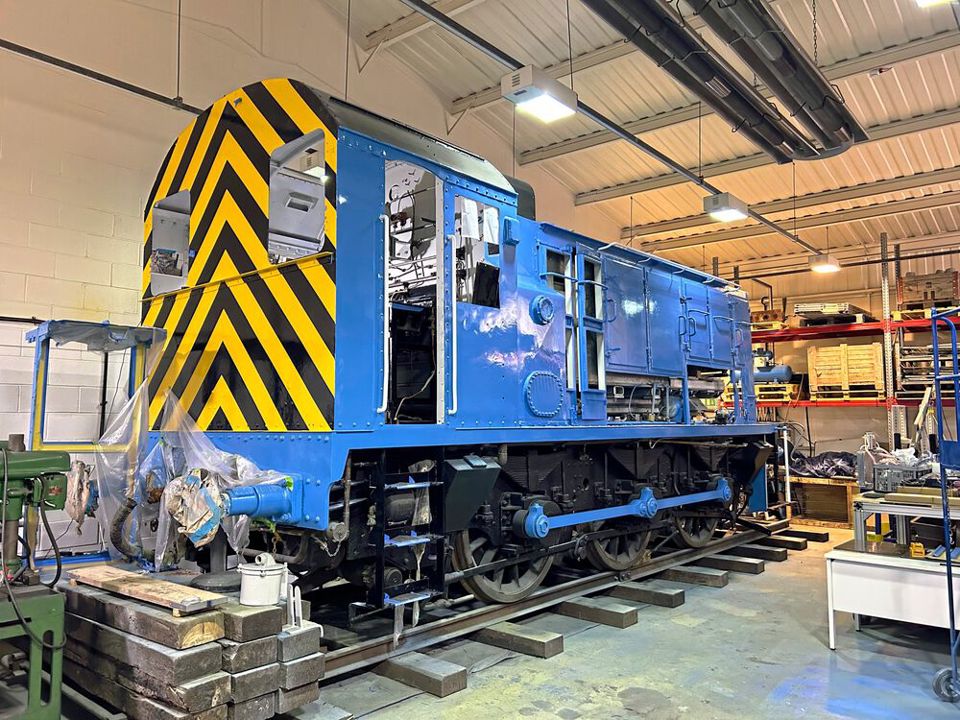

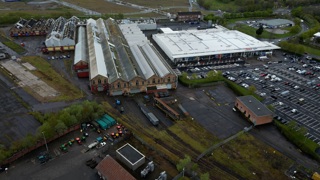
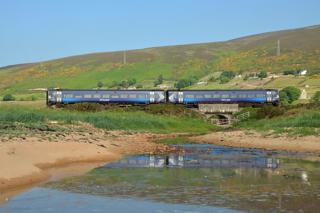
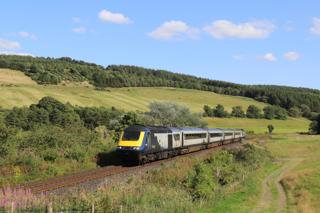
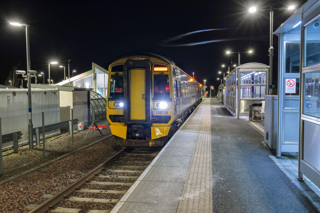
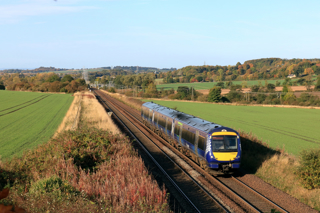




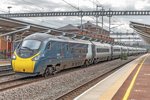







Login to comment
Comments
No comments have been made yet.